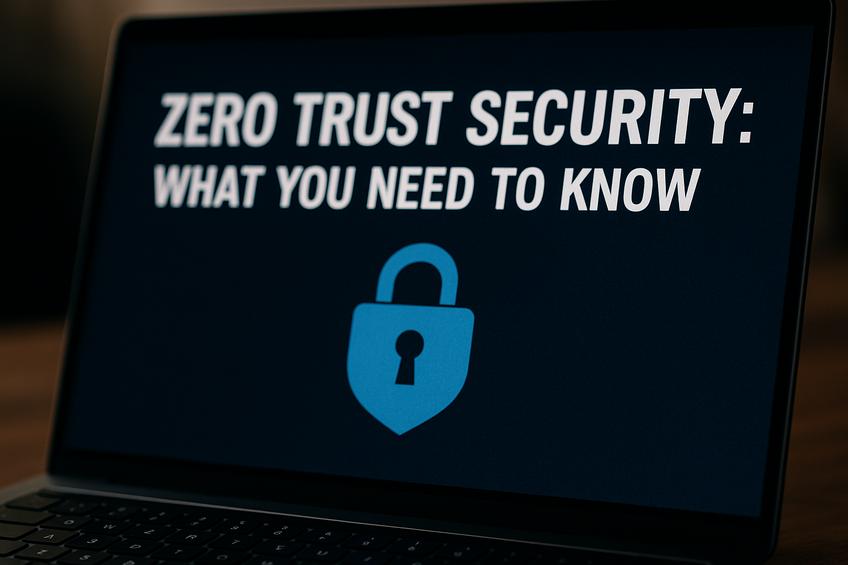Understanding Zero Trust Security
Zero Trust Security is a modern cybersecurity framework that challenges the traditional notion of trust within a network. Its core principle is "never trust, always verify," meaning that no user, device, or application is trusted by default, whether inside or outside the network perimeter. Every access request undergoes strict identity verification, device health checks, and continuous monitoring before being granted access to resources (Microsoft).
This approach is crucial in today’s digital environment, which features a mobile workforce, cloud computing, and increasingly sophisticated cyber threats. Zero Trust adapts to these complexities by protecting user accounts, devices, applications, and data wherever they are located. It integrates security across the entire organization as a comprehensive strategy to minimize risk and improve resilience against breaches Barreras IT.
Core Principles of Zero Trust
Zero Trust is a cybersecurity model built on three fundamental principles essential for maintaining robust security in modern IT environments. First, it requires continuous identity verification, meaning that every access request is dynamically authenticated and authorized rather than assumed trustworthy based on network location. This principle ensures that users, devices, and applications are constantly validated before gaining access to resources.
Second, least privilege access is enforced by granting users and systems only the minimum levels of access necessary to perform their tasks. This limits the potential damage of compromised credentials or insider threats by reducing unnecessary permissions. Third, ongoing monitoring and analysis of user behavior, device posture, and access patterns are used to detect anomalies, respond to threats quickly, and adapt access policies continuously. This proactive approach maintains security even as threats evolve Zscaler.
Advantages of Zero Trust Implementation
Implementing a Zero Trust security model offers organizations a significant enhancement in their security posture by fundamentally changing how access and trust are managed within their networks. Unlike traditional perimeter-based security, Zero Trust assumes that no user or device, inside or outside the organization, should be trusted by default. This approach leads to several key advantages:
- Reduced Risk of Data Breaches: Zero Trust enforces strict identity verification and continuous authentication, which prevents unauthorized access and lateral movement within the network, significantly lowering the chances of data breaches CIO.
- Improved Visibility and Control: Organizations gain comprehensive insight into user activities and device behaviors, enabling rapid detection of anomalies and potential threats.
- Enhanced Security for Cloud and Remote Access: Zero Trust is inherently suited for securing cloud environments and remote workforces by enforcing access policies that verify every connection consistently, regardless of location.
- Minimized Attack Surface: By adhering to the principle of least privilege, users and devices are granted only the access necessary for their roles, reducing opportunities for attackers to exploit excess permissions.
- Simplified Security Infrastructure: Zero Trust frameworks can reduce complexity by eliminating the need for extensive perimeter defenses and backhauling traffic, often functioning as cloud-delivered services that require less maintenance.
Overall, organizations adopting Zero Trust can expect a far more resilient defense against cyber threats, decreased risk exposure, and greater assurance in safeguarding critical data and systems Barreras IT.
Strategies for Transitioning to Zero Trust
Transitioning to a Zero Trust model requires a strategic approach that integrates people, processes, and technology to establish a robust security posture. Key strategies include:
- Establish a Clear Zero Trust Policy: Develop and enforce unified security policies that standardize access controls, authentication, and monitoring across all systems.
- Implement Strong Identity and Access Management (IAM): Employ multi-factor authentication (MFA), least privilege access principles, and continuous verification to ensure only authorized users and devices gain access to resources.
- Segment Networks and Resources: Use micro-segmentation to isolate critical data and systems, limiting lateral movement within the network in case of a breach.
- Continuous Monitoring and Analytics: Deploy tools that provide real-time visibility into user behavior, device health, and network traffic to detect anomalies and respond promptly to threats.
- Adopt Advanced Security Technologies: Leverage identity-aware proxies, endpoint detection and response (EDR), encryption, and automated security orchestration to support Zero Trust principles.
By choosing the right technologies for your environment and integrating them seamlessly into your existing infrastructure, organizations can effectively promote a Zero Trust culture Barreras IT Managed IT Services.
Challenges of Zero Trust Implementation
Deploying a Zero Trust architecture presents several common challenges that organizations must navigate to ensure success. One primary obstacle is managing hybrid-network complexity and interoperability issues. Zero Trust requires seamless integration across diverse security technologies and platforms, which can be difficult in environments that combine on-premises and cloud infrastructure.
Another significant challenge is the strain on resources, including financial investment and skilled personnel. Implementing Zero Trust often demands new infrastructure, continuous monitoring, and extensive employee training. Organizations should mitigate these pressures by prioritizing critical assets, phasing the deployment to spread costs, and fostering internal expertise through training programs.
Data visibility and monitoring also pose a hurdle. Zero Trust mandates comprehensive insight into all network activity to enforce least-privilege access and detect anomalies. Achieving this requires deploying advanced monitoring solutions and refining data analytics capabilities to maintain situational awareness without overwhelming IT teams. For more insights, the detailed analysis by Tufin on common Zero Trust hurdles offers practical guidance and can be viewed here.





